For the ability to view the lens ZOOM ARSAT H 1: 4.5 80-200 mm huge thanks to Igor - http://www.graffotoart.com.ua/.
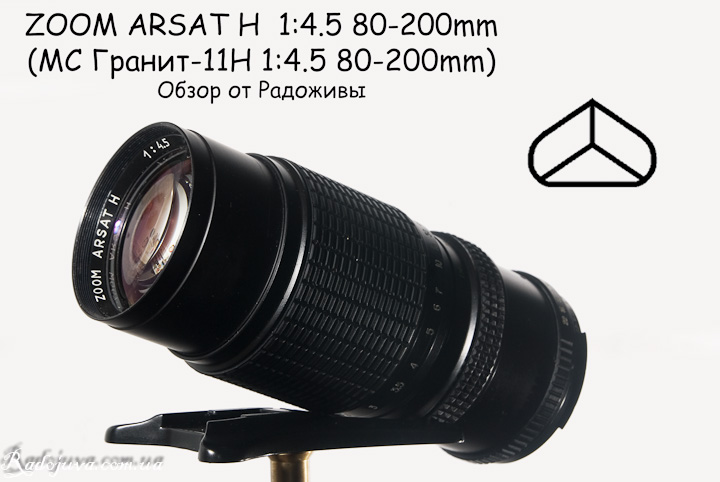
Review MC Granite-11N F4,5 80-200mm
There are several lens modifications in which the devil will break his leg. The most common:
- MS Granite 11Н 4,5 / 80-200, then the lens began to be called ZOOM ARSAT H 1: 4.5 80-200mm. Although the names are different, it is one and the same lens.
- Granite 11Н 4,5 / 80-200, version of the lens with N mount (similar to Nikon mount), but without multi-enlightenment. The name can be found in Latin letters as Granit-11N 4,5 / 80-200
- MS Granite 11М 4,5 / 80-200, then the lens began to be called ZOOM ARSAT M 1: 4.5 80-200mm. Although the names are different, it's the same lens.
- Granite 11М 4,5 / 80-200, lens version for M42 thread without multi-enlightenment
- Granite 11-Automatic 4,5 / 80-200 for cameras Kiev-10 and Kiev-15.
- Granite-11 4,5 / 80-200 is the earliest version (shown in the gallery below). It has no multi-coating, it is designed for M42 threads. Perhaps a simple Granite-11 was also under the "N" mount.
- Granite 11А 4,5 / 80-200 is a rather rare specimen. Had MDF 2 meters, versus 1.2 meters in other modifications.
To summarize, there are basic modifications for the M42 thread and the H bayonet. The threaded ones are designated as "M", and the bayonet ones as "H". The confusion is added by the fact that after the collapse of the USSR, the Arsenal plant began to call the lenses "Arsat". Because, ZOOM ARSAT 80-200 and Granite 11 80-200 are the same lens with different names. And also, there were export options with the name Granit-11N in Latin.
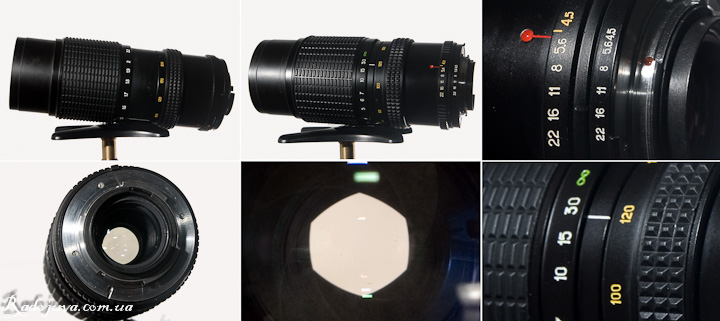
View MC Granite-11N F4,5 80-200mm from different sides
This review presents exactly ZOOM ARSAT H 1: 4.5 80-200mm. This is the same lens as MS Granite 11Н 4,5 / 80-200. I already have a lens review ZOOM ARSAT M 1: 4.5 80-200mm, all the main points when working with the lens are painted there. Here I just describe the nuances of the H version.
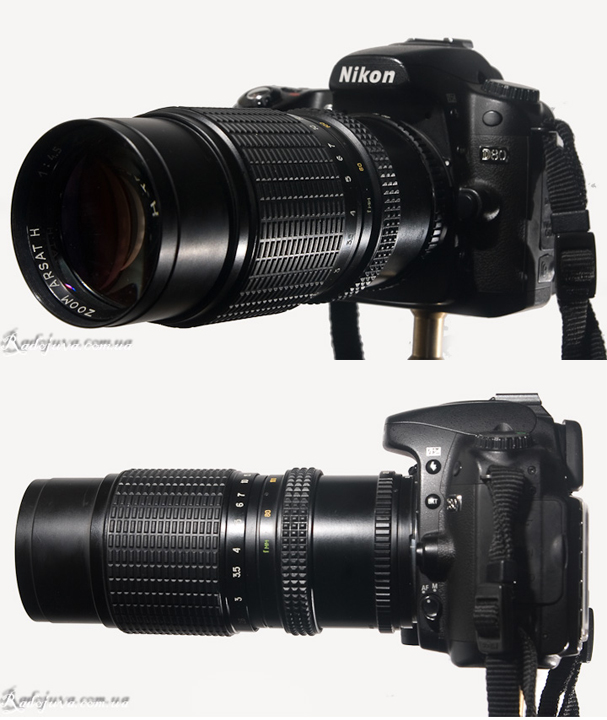
View of MC Granite-11N F4,5 80-200mm from different sides on a modern camera
I will use the old name MC Granit-11N. The lens attracts with the ability to mount on modern Nikon cameras without adapters. MC Granit-11N has the same mount (mount to the camera) as the native Nikon lenses with F mount. MC Granit-11N is also AI-S lens for Nikon. I just took the MC Granite-11N and installed it on my camera. How to use old lenses on modern Nikon cameras can be found in the section Soviet optics. For use on Nikon cameras, I recommend the following lens versions: MS Granite 11Н 4.5 / 80-200, ZOOM ARSAT H 1:4.5 80-200mm, Гранит-11Н 4.5 / 80-200 they will allow you to get the ability to focus on infinity on Nikon cameras and do not require any adapters.
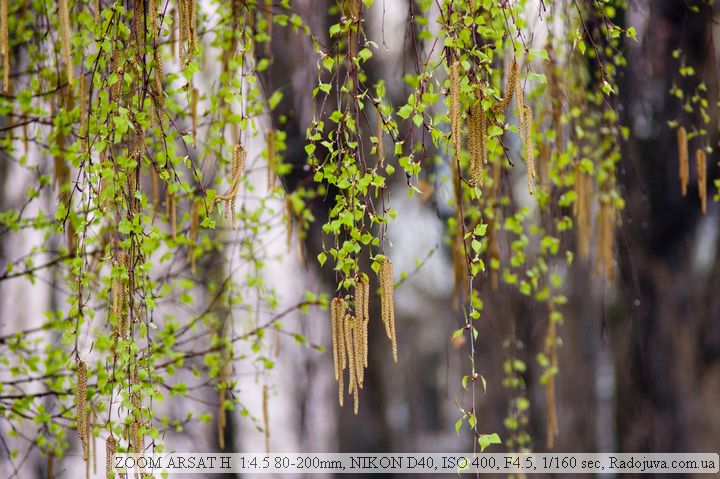
Sample photo on MS Granit-11N 80-200mm
Lens Granit-11 is the most popular Soviet telephoto zoom lens. It is very easy to find, the Internet is literally teeming with offers for sale. For me personally, ZOOM ARSAT M 1: 4.5 80-200mm was the first Soviet lens, I did not have infinity on my camera Nikon D90because I sold it.
Lens Features:
- Smooth focusing, focus ring travel: approximately 300 degrees. When focusing from infinity to MDF 1.2 meters, the lens changes its length by 3 centimeters. The focus ring is comfortable, rubberized.
- Internal zoom. When zooming, the lens does not change its size. When zooming, focus is lost.
- The diameter of the front filter is 58mm. Lenses have multi-enlightenment. When focusing, the front lens rotates.
- Aperture constant at all focal lengths
- Sharpness floats at different focal lengths
- The weight of the lens allows you to easily take off.
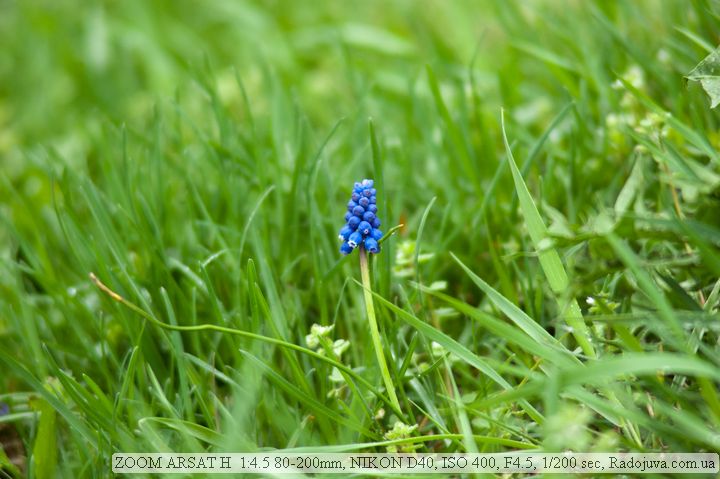
Sample photo on MS Granit-11N 80-200mm
Sample photos on ZOOM ARSAT H 1: 4.5 80-200 mm
All photos without processing. Reduced size, added data from EXIF.
Image quality:
My first copy ZOOM ARSAT M 1: 4.5 80-200mm showed not very good image quality. But an instance from this review ZOOM ARSAT H 1: 4.5 80-200mm much better pleased with the quality. On F4.5 there is light software, but within normal limits. Very little distortion, the lack of vignetting on the crop and the huge focal length make it possible to get excellent portraits. HA and poor sharpness are the main disadvantages of the lens.
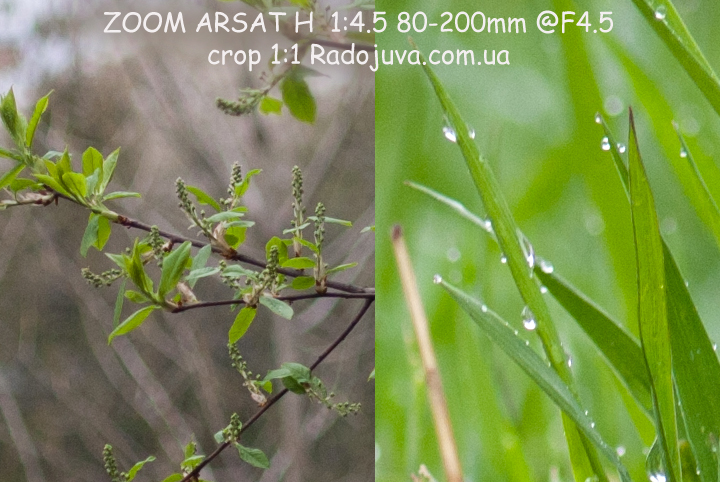
Sharpness MS Granite-11. No processing. Crop quality 100 percent
Catalog modern brand lenses 'Zenitar' и 'Helios' can look at this link.
Comments on this post do not require registration. Anyone can leave a comment. Many different photographic equipment can be found on AliExpress.
Conclusions:
MC GRANIT-11N - a good telezoom lens. There is a huge variation in quality due to long-term production and a number of lens modifications. If you get a good copy in your hands, then the image quality will please.
Material prepared Arkady Shapoval. Training/Consultations | Youtube | Facebook | Instagram | Twitter | Telegram

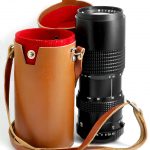
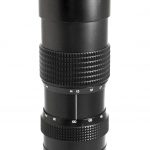
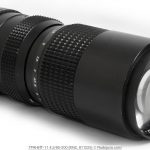
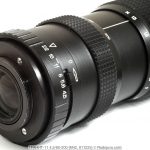
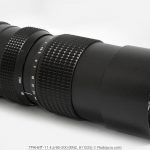
















Arkady, who is the head, having written a lot of positive, and a photo, obviously, garnie (it’s impossible to guess, but you are aware of it). But the stench is broken in cloudy weather !! Whenever there is a dream, "any galime school" is presented from a good angle.
Why are the LAZI OB'єktivas still fed up top?
I walked around with such samples, and I give a grudge, that at the sound of Dirk’s screening I’m not working (MCs without, but chromatic chroberatsii so і go off scale at the viewers of the paradise syayva), and “in the forehead” the guarantors are really obscurely robotic school grade 5.6, and less than all 8
Arkadiyu, yakshcho not breaking, give, be a sweetie, to the people of the little picture of sleepy wait, for your visual recognition of your words. Well, really, it’s better to read it and read it to your level.
Є, there is a unique charm in Granites (wait a long time in tini ..); That at a dream, sunbathe on the beach with him? (and tse vikhid ..). Є Well normal (zakordonny manuals) zoom (for all weather), that fixi should be in mod .. For any kind of vipad, I DO NOT recommend NIRAZA ..
In sunny weather I did not shoot, but I think if you shoot at 5.6-8, then the XA will not pester and wake up more sharply. But he does not feel distortions - this gives a thrill from the feeling that in his hands, at least in some sense, the thing is of high quality. not the sharpest, but not the most soapy. For example, on FR 80 and diaphragm 8, my copy turned out to be sharper than arsat-n50 at 8 diaphragm. Also sharper than 18-55 at 55mm 8 diaphragm. the table was photographed on the monitor (light in the lens) 80mm camera was placed further to cover the same area of the screen. The photo on the d3200 was comparable at 100% scale with sharpening and without. Maybe not a holy object, but it costs a penny, glass + metal, no distortion, you can to get sharpness, because of the weight it works as a stabilizer), the aperture does not change when zooming, there is no need to redo for Nikon cameras - all this together stands in opposition to the disadvantages of the lens such as HA on an open aperture and different sharpness depending on the FR (I myself have not noticed for the floor yet years) .. Enlightenment generally doesn’t count because who is stopping you from putting the hood on? And who makes you take a picture against the sun? The light transmission of the glasses is not worse than that of the Nikor 18-55 with the same aperture (compared with the RAV histograms). The blue color is a little less skimpy than the Nikkor or the same arsat, but is this a problem for digital cameras? For example, this moment is pleasant to me because I hate blue pictures
Hello! Do i need to stick a dandelion on this lens for nikon d 5000? Thank you in advance!
To work not only in M mode, it is necessary.
For your price - a good one, active. For modest amateur photographers.
Hello. Can I mount this lens on a Canon 500D? Thank you in advance.
Oh yes, I had such an objective. Heavy bastard. But maybe he was worth it. The photos were gorgeous.
I bought a lens ZOOM ARSAT H 1: 4.5 80-200mm NEW !!! But what a misfortune. Here's a picture on my Nikon D800e camera (I attach the files). Tell me what's the catch. It’s as if something is wedging in the chamber.
Another example.
It looks like it clings to a mirror, does not allow it to rise completely. Is the camera still alive?)))
In Live viwe, the same picture as in the photo. The screen is half black :(
Because it's dark.
Hello.Arkady, I have this lens, but the aperture value, alas, is not transmitted to the camera. Perhaps it depends on the year of manufacture, series ...? Or I did not understand something
What kind of camera?
Nikon d 5100, or will it only work with dandelion?
at 5100 there is no rheostat through which the aperture value is transmitted. It's not the lens, but the camera. Dandelion makes working with the lens easier, especially if your lens is exactly Nikon :)
Clearly. Thank you, explained. And since the lens is under Nikon, we will torment the dandelion)
Tell me, what kind of dandelion should I take on the Nikon D5100 and this lens?)
Dandelion for Nikon
just tested granite-11 on a nikon 5100. the head can be removed only in “M” mode. my first televik. liked it, albeit a heavy tripod, what is it for? =) decided, take it =)
Hello! Explain to me please. Recently I purchased a Granite 11N lens mount under Nikon, a lens sticks out at the lens mount for what is it for? And even when you change the aperture from 4.5 to 22, there is no difference, as if there were no petals. Thank you
https://radojuva.com.ua/2014/11/aperture-during-video-nikon-and-angry-haruhi/
The diaphragm is closed either by the pusher (automatic control) or the lever of quick closing of the diaphragm (located next to the diaphragm ring in Granite of the earlier version). Focus with an open aperture, shoot from closed to a preset value
“Lenses of the 'H' series with automatic aperture control, for example, such as Granit-11H 80-200mm F4.5 MC, with such lenses, you need to set the value using the aperture control ring on the lens itself, and closing the aperture itself during shooting will do the camera itself. " (from)
Regarding point 6 in the description of modifications - “Granit-11 4,5 / 80-200 is the earliest version. It has no multi-coating, it is designed for M42 threads. Perhaps it was just that Granit-11 was also under the “N” mount ”.
I bought this version back in 84. The lens shank was originally threaded 42, in the box there are two more shanks - for Kiev 15 and Nikon, the kit included two light filters - UV and ZhZ.
I have Granite-11 4,5 / 80-200, 1984 release with a quality mark. I came across an option in the factory complete set. (Complete set!) And in my opinion, it has never been removed from the factory packing box since 1984. Even on the thread there are no traces of screwing to the camera !!! Preservation - museum and collection !!! (Which is very gratifying, since it is VERY rare.) So, the lens was originally supplied with a mount for the Nikon system and was equipped with interchangeable shanks for M42 and Kiev-15 !!! Whether these shanks are suitable for other lenses, I have not tried it yet, if they are suitable for the Avtomat series, with the transition to M42 and Nikon, and for Nikon mounts, with the transition to M42 - then absolutely wonderful! But I haven't tried it yet. If anyone has come across, please tell us about your experience
Factory equipment: 1. Cardboard box, pretty solid. 2. Lens with integrated lens hood. 3. Front metal cover. 4. Plastic back cover (for Nikon). 5. Wardrobe trunk leatherette-plastic, hard. 6. The belt is textile, for a case, with a rubber insert shoulder strap. 7. UV-1 filter 58 / 0,75 in a transparent box. 8. The filter ZhZ-1,4 58 / 0,75 in a transparent box. 9. The adapter adapter for the M42 mount (PO = 45,5 mm) made of ferrous metal. 10. The adapter adapter for the mount Kiev-10, Kiev-15 (PO = 44mm) made of white metal. 11. The adapter adapter for the Kiev 17 bayonet mount, aka Nikon (PO = 46,5) made of white metal. This adapter is on the lens. 12. Instruction.
Hello!
Can anyone help ???
I bought a given lens on the Internet. There is a problem. As I understand it, this ring (which is also the guardian of the rotation of the focus ring) should be fixed, but mine rotates, which makes it possible to completely tilt the front of the lens.
How can it be fixed ???
Found instructions:
http://www.club-nikon.ru/forum/topic/76181-%D1%80%D0%B0%D0%B7%D0%B1%D0%BE%D1%80%D0%BA%D0%B0-%D0%BE%D0%B1%D1%8A%D0%B5%D0%BA%D1%82%D0%B8%D0%B2%D0%B0-%D0%B3%D1%80%D0%B0%D0%BD%D0%B8%D1%82-11%D0%BD/
He pulled three small screws, they are not immediately visible, the ring is fixed ...
Maybe someone will need it.
Arkady, have you met soligor 70-210 3.5? very similar to granite.
Tell me, on the d7100 with this lens, will there be infinity?
Granite 11 (First issues) came with the ability to install on THREE systems (NIKON, M-42, Kiev - 10,15). There are no markings on the lens about this. With what tail you buy it, it will be on such a system. Well, if you have a factory complete set, then you yourself can choose the mount to attach to the camera. (In 1984, Granite - 11 cost as much as 420 rubles, which made the kit good.)
and another question ... I have nikond7100 + sigma17-50f2.8 ... I select a budget zoom lens in the range of 50-200. but since the camera is dx, I also understand that this granite will give me a focal range somewhere 130-300? or I'm wrong. Tell me, is there a zoom that will cover 50-200 of the Soviet ones ??? if not, then advise the Soviet fixes that the focal point on the crop was 85mm, 100mm, 135mm, 150mm ... thanks a lot.
1. Yes, infinity will be where the letter “H” or “A” is after the model. For example, Granit-11N, MS Granit-11N, Granit-11A.
2. FR - the value is unchanged. But EGF - depends on the crop factor. In your case
pair 17-50 + 80-200 - quite a sane pair, if you make friends with manual focusing. Maybe it's better to save some money and buy an autofocus Nikon 55-200?
Thank you Sergey. I was already friends with manual focusing - I used Jupiter 37a for a long time, which at one time, unfortunately, had to be sold ... I really liked everything in Jupiter - the only thing in the room with him at all, and so the picture is divine ... Nikon 55-200 was also ... the picture was not I like it ... I don’t know, for some reason it seems to me that there is a picture on Soviet lenses, how is it skpzat- live chtoli ... I have 17-50 sigma for dx cameras ... if I take this granite I will have the ranges .. 17-50 and 120-300 ... 50 -120 drop out ... then you will have to buy another Soviet fifty dollars to have at least 75 mm ... did I count everything correctly?)
Arkady, tell me - I look at this lens as a portrait lens (in second place as a telephoto lens). The question is - what is all the same better for shooting a portrait - this granite, or a bundle - Jupiter 37a + Helios81H ???
Please tell me what is the Soviet lens for kenon with a large focal length, otherwise the whale is a little closer. thanks for the answer
The review says nothing about the rotation of the front lens when focusing.
Good day! Tell me, on nikon 1 v1, is this lens suitable or what other one can I fit?
No, this should not be set to nikon 1. It’s better to use cinematic C-mount lenses then, among them there are decent ones.
Or better relatives.
Granita will not be enough for such a small matrix.
> a dandelion, it doesn't matter if you zoom or fix
> dandelion just helps in metering) and focus -
> and with and without a dandelion, and on a carcass with and without a screwdriver - only handles
> the truth without a dandelion will help a little "green point,
> and with a dandelion, a squeak from the device can also be added to it)
And where does the dandelion to the point? If the camera recorded the appearance of a point, then it can squeak itself, without a dandelion
Dandelion doesn’t care, zoom or fix. it programmed the focal length. this is one meaning
this feature is more likely for exif, and not for real benefits for flash automation
I read these comments, and I see that the local owners of this lens amicably scolding him for his low sharpness.
And they are probably right, because they have tried it.
Well, then a request to them - did anyone notice who has this sharpness higher - from the Soviet Granite, or the Kiev Arsat?
It is clear that structurally this is one and the same. But it often happens that seemingly insignificant technological differences in production lead to noticeable qualitative results.
(as, for example, Valdai and KMZ produced the same lenses, but the quality was different)
Therefore, I wonder who has a better picture - “MC Granit-11N 4,5 / 80-200”, or “ZOOM ARSAT H 1: 4.5 80-200mm”?
Or are they all beaten by “Granit-11N”? :)
Rumors have it that ARSAT is worse, since everyone has already begun to plunder, they did not monitor the quality. But there are also rumors that ARSAT is better, because the process has already been perfected. Working with arsats and helios I cannot give a definite answer. You need to look at the model of a specific year of production. Too much water has flowed, many lenses have struggled with time. You can’t take two new model lenses and draw a conclusion now.
Thank you Arkady! :)
Good afternoon, carcass 3100, bought an “H” lens. On the removed lens, the diaphragm closes and opens normally, but when worn on the carcass - whatever you twist, the ring always remains open. the aperture pawl on the removed lens moves upward as the aperture is opened and does not return to the zero position as on Nikkor lenses. Please tell us how this mechanism works and give advice on how to cross two devices. Thanks.
when the lens is mounted on the camera, the aperture always remains open, regardless of the value set by the ring, and closes to the set value, at the time of shooting, then opens again. Arkady has an article about it, everything is described there
maybe, but then it doesn’t close for me on the lens attached to the camera, although everything works fine on the shot. Photos are the same in brightness, which is closed, that is, on the open aperture.
look into the lens itself, during the picture (close the aperture and set the shutter speed for a couple of seconds) to see the operation of the aperture, if it definitely does not work, bring the lens to repair
I will be sawing. the dog on granite is twice as high as the bayonet mount than on Nikkor lenses and at the time of installation does not sit on the camera’s diaphragm control lever, resting on the plastic parts and jamming in the open position.
All sawed off 2 mm. Working!